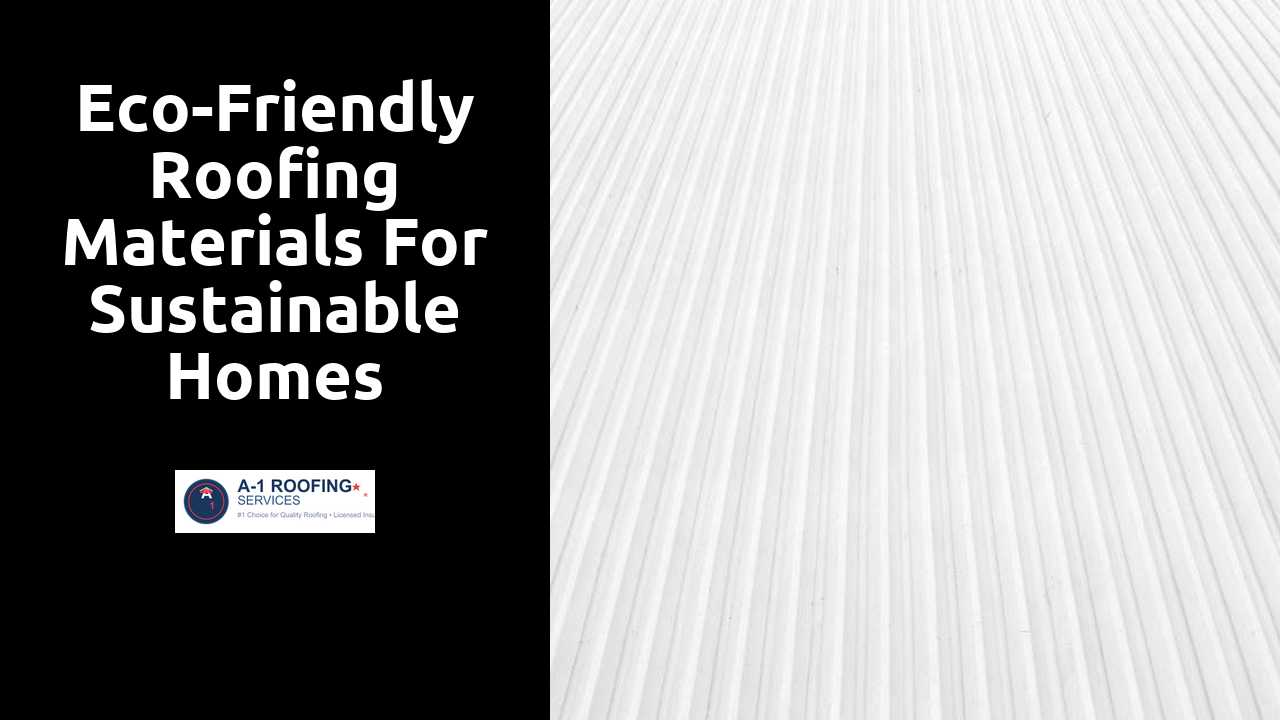
Eco-Friendly Roofing Materials for Sustainable Homes
Table Of Contents
Choosing Wood Shakes and Shingles
Wood shakes and shingles offer a timeless aesthetic that enhances the beauty of any home. Sourced from renewable materials, this roofing option is often crafted from cedar, redwood, or other durable wood types known for their resistance to rot and insects. Homeowners appreciate the rustic charm that wood provides along with its natural insulation properties, which can contribute to energy efficiency. Well-maintained wood roofs can last for several decades, making them a wise investment in terms of both beauty and longevity.
Choosing wood shakes and shingles also supports eco-friendly building practices. Many manufacturers now offer sustainably sourced wood, ensuring that the harvesting process aligns with environmental conservation efforts. When choosing this roofing material, it's essential to consider the overall climate and weather conditions in your area. Proper installation and regular maintenance can further extend the lifespan of wood roofs, making them not only visually appealing but also a practical choice for sustainable home building.
Find out further details by clicking here.
Natural Aesthetics and Renewability
The charm of wood shakes and shingles can enhance the visual appeal of a home significantly. Their natural textures and rich colors often blend seamlessly with the surrounding environment. Homeowners appreciate the versatility, as these materials can complement various architectural styles, from rustic to modern. Additionally, the age of these roofing options contributes to their allure, as they can develop a beautiful weathered look over time.
Renewability is a significant factor when considering wood as a roofing material. Sourced from sustainably managed forests, wood shakes and shingles can be produced with minimal environmental impact. Many manufacturers adhere to strict guidelines that promote responsible forestry practices. As a result, choosing these materials not only supports eco-friendly initiatives but also ensures that the homes maintain a connection to nature.
Importance of Proper Insulation
Effective insulation plays a crucial role in maintaining a comfortable indoor environment while reducing energy consumption. Properly insulated roofs help to keep homes warm in the winter and cool in the summer. This not only lends to a more enjoyable living space but also minimizes the need for excessive heating and cooling, leading to lower utility bills over time. Many homeowners overlook insulation as a key component of sustainability when selecting roofing materials, yet it is just as vital as the materials themselves.
Selecting the right insulation can significantly impact a home's overall energy efficiency. Various options, such as spray foam, cellulose, and fiberglass, offer different levels of performance and environmental benefits. Homeowners should consider the local climate and specific energy needs when choosing insulation. The initial investment in high-quality insulation may seem daunting, but the long-term savings in energy costs and the advantages of reducing one’s carbon footprint make it a worthy consideration.
Maximizing Energy Savings
Effective insulation significantly contributes to energy efficiency in homes. By preventing the escape of warm air during winter and keeping interiors cool in summer, homeowners can rely less on heating and cooling systems. This balance not only reduces energy consumption but also lowers utility bills. Employing high-quality insulation materials ensures a more comfortable living environment throughout the year.
Incorporating energy-efficient windows complements insulation efforts. Choosing double-glazed or low-emissivity (Low-E) glass options further minimizes heat transfer. These windows reflect interior temperatures back inside, reducing the workload on HVAC systems. Selecting the right roofing materials also plays a pivotal role in maintaining energy efficiency, as they influence the overall thermal performance of the home.
The Impact of Cool Roofing Techniques
Cool roofing techniques serve as a pivotal strategy in combating the effects of increased urban temperatures. These roofs reflect more sunlight and absorb less heat than conventional roofing materials. By utilizing reflective coatings, lighter-colored materials, or specially designed tiles, homeowners can significantly reduce the amount of heat transferred into their buildings. This not only decreases reliance on air conditioning systems but also enhances overall indoor comfort.
Implementing cool roofing solutions contributes to broader environmental benefits as well. By lowering rooftop temperatures, these techniques help mitigate the urban heat island effect, where cities become much warmer than their rural surroundings. Cooler urban areas can lead to decreased energy consumption across communities, reduced air pollution, and improved public health outcomes. As more homeowners adopt these sustainable practices, the cumulative impacts can foster a more resilient urban ecosystem.
Reducing Urban Heat Islands
Urban areas often experience higher temperatures than surrounding rural regions, a phenomenon known as the urban heat island effect. This occurs due to the extensive use of dark, heat-absorbing materials like asphalt and concrete in construction. Employing cool roofing techniques helps mitigate this issue by utilizing materials that reflect more sunlight and absorb less heat, contributing to a cooler environment.
Implementing cool roofs not only lowers energy demands for air conditioning but also enhances outdoor comfort, promoting healthier living conditions. This practice can significantly reduce the heat generated by urban surfaces, leading to lower overall temperatures across neighborhoods. Sustainability efforts in roofing can transform cities, making them more resilient against heat waves while fostering a more livable atmosphere for residents.
Related Links
How to Choose the Right Roof Color for Your HomeComparing Roofing Underlayment Options for Residential Roofs